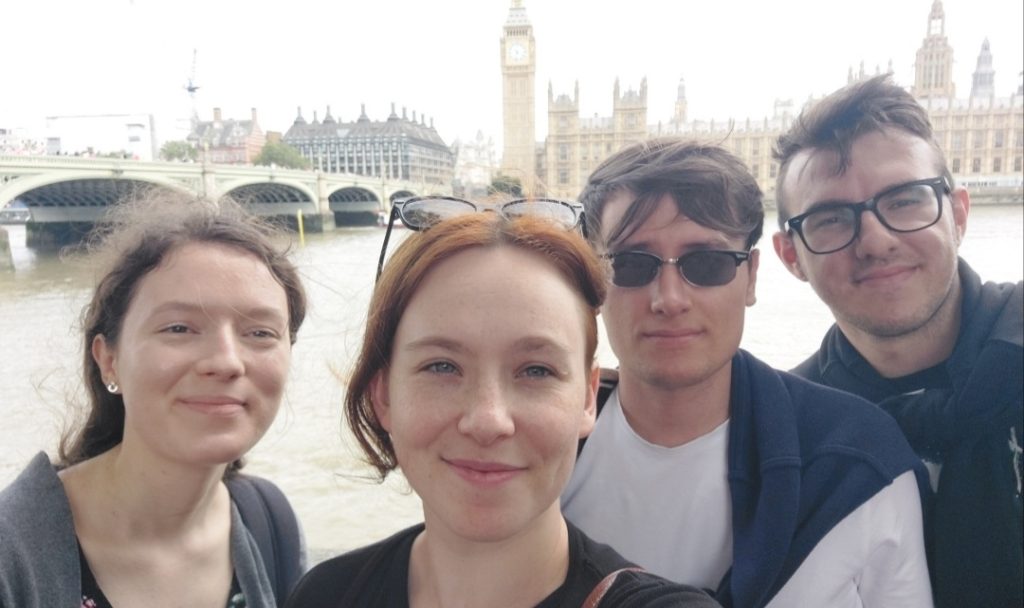
Having received plane tickets to London as our prize, some of the winners of the competition in writing in Shakespearean English – Maruša Čop, Erazem Brinovec, and myself – spent a few August days in the riveting city, joined also by another English student, Adel Habibović. Accordingly, the Bard and his work of course played an important role (pun intended) in our visit.
We had the privilege of seeing a Shakespeare classic, Macbeth, at the best possible venue one could imagine – the Globe. The warning in front of the entrance turned out to be fairly suitable, as the version of Macbeth we witnessed included blending human flesh (a prop, or so I hope) in a kitchen blender, in addition to some memorable sartorial choices ranging from Spiderman pyjamas to, well … nothing at all. Having decided to channel the poorer among the Elizabethan society and get standing tickets, we were glad to be able to sit down on the floor during the intermission and complete the eclectic postmodernist experience by devouring some sushi, purchased previously. We were admittedly compensated for sore legs by getting to enjoy the spectacle close to the stage and in the midst of a lively crowd which at times exploded in laughter at some witty line or gasped as a furious Macbeth forcefully made his way through.
The infamous Scottish king evidently pervaded not just the theatre but also the art scene in London; the next day, we spotted Corot’s painting Macbeth and the Witches in the Wallace Collection, a museum located in a former aristocratic family home and therefore exhibiting an appropriately grandiose interior. We took advantage of the fact that entry to galleries and museums in London is free and explored some more; at Tate Britain, a collection of works by the English Romantic painter J.M.W. Turner was on display. A quick flip through Wikipedia informed us of the artist’s trademark, namely his “turbulent, often violent marine paintings”, of which there were indeed many to behold. In the evening, we opted for a leisurely stroll in Hyde Park, surrounded by an astonishing number of free-roaming squirrels, and then wrapped up the day with a quintessentially English experience – going to a pub, wetting our whistles with some beer and cider tea.
We concluded our stay with a day trip to Hampton Court, an imposing palace that was once a much favoured residence of Henry VIII but has since also obtained a baroque extension. The enormous palace grounds are a world unto themselves; besides the splendid ornamental and vegetable gardens, they boast the UK’s oldest surviving hedge maze, which also features in Jerome K. Jerome’s Three Men in a Boat. “We’ll just go in here, so that you can say you’ve been, but it’s very simple. It’s absurd to call it a maze. You keep on taking the first turning to the right. We’ll just walk round for ten minutes, and then go and get some lunch,” explains Harris, one of the main characters, to some visitors before the lot get lost in the maze for several hours. We, on the other hand, were proud to (rather boringly) find the exit quite a bit faster, and then had lunch in the park as we decided to follow a local habit and join the picknicking flock.
Overall we were blessed with peculiarly un-English weather – there was not once in four days a need to open an umbrella – but were admittedly glad to return home to some slightly less spicy meals. To write or not to write was not a question, and to return or not to return won’t be one, either; there is much left to explore in the city by the Thames.
Zarja Križnik
